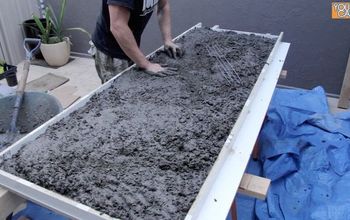How do you loosen wood clue?
I received an old oak dresser and someone attempted to clue the back of the drawer back on and did a horrendous job! It's crooked an all out of whack. Is there a way to loosen this clue to reattempt it?
Related Discussions
How to get rid of mice?
We seem to have some unwelcome Mickeys and Minnies in our house. What is the best way to get rid of them?
How to remove popcorn ceiling with asbestos?
I want to remove my popcorn ceiling, but it has asbestos in it. How do I go about this safely?
How to caulk baseboard gaps?
How do I fill gaps at baseboard, should I caulk? If so, does anyone know how to caulk baseboards?
How to fix squeaky hardwood floors?
How do I fix squeaky hardwood floors?
How do you fix wood furniture that shrinks?
Bought this on letgo app! I believe now that it was kept outdoors prior to purchasing! Since putting inside my home where it is cool temperature the table wood has sh... See more





Denatured alcohol should work.
Here are multiple techniques to loosen and remove the glue:
https://startwoodworkingnow.com/how-to-dissolve-wood-glue/
Hi Meredith, use your hairdryer to soften the glue and wipe it away. You can also use vegetable oil. It normally works for me.
The hair dryer method has worked for me as well. Be patient and as the llue softens you can scrape the old away before regluing properly.
Hi Meredith, hope this helps you out, Soak a cotton bud or rag in a solvent such as acetone nail polish remover or vinegar diluted in water. Note that acetone is only suitable for unfinished, untreated wood, while vinegar is a softer alternative, less likely to cause damage.
Here are 7 methods.
*Disclaimer – Some of the chemicals below are corrosive and have fumes. Please ensure you use respirators, gloves, and glasses when applicable
Undiluted white vinegar can dissolve wood glue. Apply with a soaked rag.
Acetone, the kind you buy in the hardware store not nail polish remover. You can also try a plastic scraper. I would take the back and use a staple gun next time.
You could also try some very warm water first before hitting the chemicals. Always test anything you plan to try in a hidden spot first to make sure it doesn't damage the piece.
There are 7 options here! https://www.woodworkingbylpicustom.com/7-methods-to-release-loosen-wood-glue-helpful-guide/